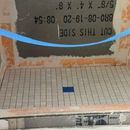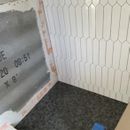Shluter Kerdi Waterproofing System
Hello. We specified and paid for Schluter Kerdi system for all our showers. The tiles are already installed at this point but I’m wondering if the Kerdi system was installed properly. It appears different than the install manual I reviewed but wondering if perhaps this is some alternate way to do it. If not, are there risks invoked with this install? Thank you.
GBA Detail Library
A collection of one thousand construction details organized by climate and house part











Replies
The language of that has a huge impact. Does "the Shluter Kerdi system" spell out the individual components used? I suppose it could be interpreted as "some of the kerdi system components" but generally I think everyone here would agree that it means the faced foam panels, shower pan, thinset, etc.. all produced by Shulter, and not just the membrane where it's convenient.
Having said that, it doesn't mean your shower is doomed, there's plenty of ways to correctly install a shower even without Kerdi. It could mean that you possibly overpaid for what amounts to vague language.
There should absolutely be some sort of waterproofing in conjunction with that concrete board. Concrete board is itself not vulnerable to water, but it will pass moisture through. Since you went with Kerdi, the logical thing would have been Kerdi membrane over the board. They could also do with with a liquid-applied membrane like RedGaurd. The third method, which they MAY have done here (worth asking) is to have some sort of water proofing behind the concrete board and then used the Kerdi to seal up all the joints.
Thanks so much. I will ask.
Bportnoy,
If the only Kerdi elements are the seams then you do not have a Kerdi system nor will Kerdi warrant the installation. iwatson is correct that cement board does not prevent water penetration, especially over time. I pulled apart a shower where plastic film was placed over the studs and then cement board added. So much water had accumulated in the cement board that all the screws had rusted out and every staple location in the plastic had rusted as well. The inevitable tears in the plastic also allowed water to begin rotting the 2x4's.
We did replace the entire framing to create a new solid base and the Kerdi system was installed per their warranty requirements. I believe they still require non-fortified thinset. The reason being that fortified thin set that never dries out can degraded from rehydration of the modifiers.
The tile setter was quite annoyed with the requirement, but 15 years out the installation is still good.
I don't see any clues as to how the pan was handled and can only hope for your sake that the detailing is proper. Not too encouraged if "Kerdi in the corners" is being sold as fullfilling the contract. If the cement board is direct to studs and no RedGard equivalent is used under the tile then I would predict problems in the not terribly distant future. Grout passes water like cement board which is why I would never set a floor job without Kerdi, RedGard or equivalent. I can't readily imagine a successful way of waterproofing behind the cement board.
Schluter does allow modified thinset if it's their Schluter-branded stuff. It's nice stuff to work with, but like anything Schluter is more expensive than the alternatives.
Thanks so much for this Information.
That looks like densshield, if that is the case a combination of Kerdi plus densshield with good details would be a pretty solid install. Not a full Kerdi shower but good enough.
If in doubt, I would do a water test on the shower pan. Plug the drain and fill it with about 2" of water. If it doesn't leak out you have a solid shower.
The cubby doesn't look to be done properly, that should have also had the kerdi bands around all edges and corners. If this is an interior wall and the bottom tile is sloped to drain properly, should not be an issue, if exterior I would be more worried.